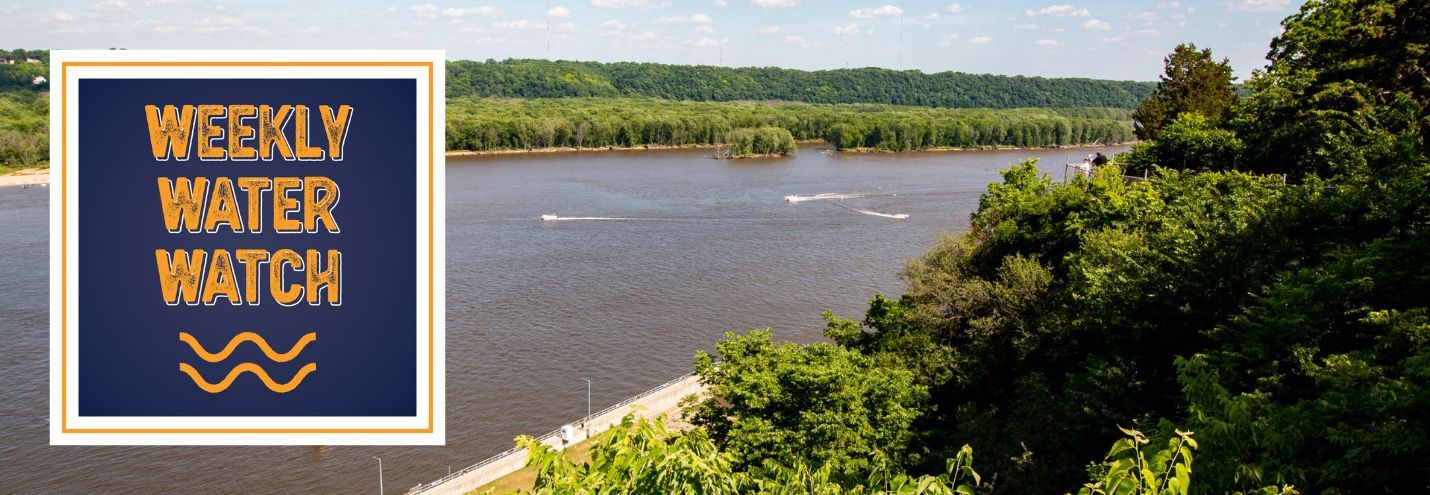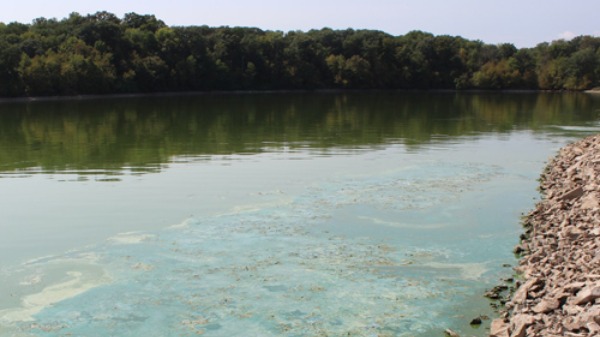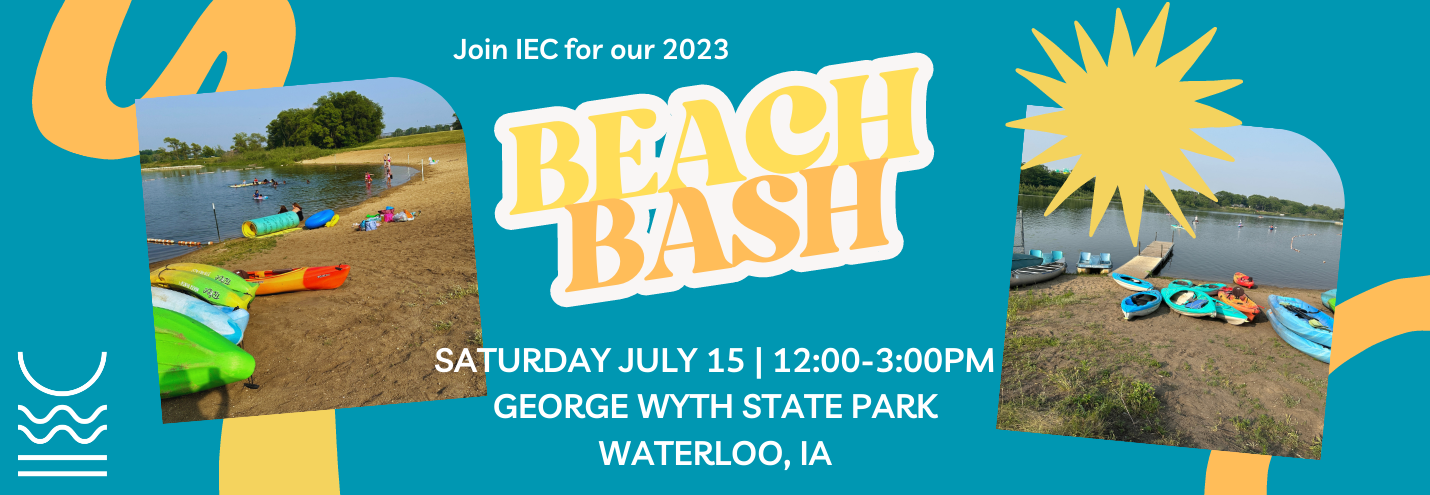|
|
 |
| 6 Beaches with an E. coli Advisory:
Black Hawk Beach (Lake View, Sac County, IA)*
George Wyth Beach (Waterloo, Black Hawk County, IA)*
Lower Pine Lake Beach (Eldora, Hardin County, IA)*
Marble Beach (Big Spirit Lake, Spirit Lake, Dickinson County, IA)*
McIntosh Woods Beach (Clear Lake, Ventura, Cerro Gordo County, IA)*
Prairie Rose Beach (Harlan, Shelby County, IA)* 2 Beaches with a Microcystin Advisory:
Brushy Creek Beach (Lehigh, Webster County, IA)*
Lake Darling Beach (Brighton, Washington County, IA)* 1 City and County Beach exceeds the state’s advisory threshold for E. coli.*
View the map on our website to see where they are. *Data from the Iowa DNR State Park Beach Monitoring Program
**Data from the U.S. Army Corps of Engineers, Rock Island District |
|
What's the problem with PFAS? |
|
PFAS (per- and polyfluoroalkyl substances), otherwise known as “Forever Chemicals,” are synthetic chemicals that can resist heat, grease, and water. They have been used in consumer and industrial products such as water-resistant fabrics, cleaning products, and nonstick cookware since the 1950s. PFAS are dangerous to humans and the environment because they are extremely soluble in water and soil, making it likely that humans will consume them. PFAS have been linked to health problems such as reproductive issues, developmental delays in children, increased risk of developing cancer, and more. Despite having known about these issues, companies producing the chemicals have done little to warn the public of their dangers. 3M, a company that has made these “Forever Chemicals” for years, says that they will start remedying the negative impacts of PFAS while continuing to defend themselves in court. 3M announced in December 2022 that they will phase out the use of PFAS by 2025, an important step in continuing to provide safe drinking water to U.S. residents. Now, the company is set to pay at least $10.3 billion to settle lawsuits over contamination of many U.S. public drinking water systems. The payments will help water providers filter PFAS out of their systems and help test water in other systems. Meanwhile, the U.S. EPA has proposed new drinking water standards for six kinds of PFAS. EPA says that if the standards are fully implemented, the rule will prevent thousands of deaths and reduce tens of thousands of serious PFAS-attributable illnesses. Public comment on the proposed rule ended on May 30. The agency anticipates finalizing the regulation by the end of 2023. To learn more about the impact of PFAS, check out IEC's new fact sheet.
|
|
|
|
|
|
 |
Blue-green algae can be toxic to pets Blue-green algae, which can be found floating on top of the water in summer and early fall, can produce toxins that can be harmful to humans and potentially deadly to pets. In recent summers, we've seen headlines about dogs falling victim to microcystin poisoning. There is no way to tell which blue-green algae blooms are toxic and which are not just by looking at them. This makes it important to always proceed with caution when you or your pets are planning on going for a swim in water where there may be an algae bloom. Learn more about threats to pets and what you can do to protect your pet from toxic algae blooms by watching this video from We Are Iowa. |
|
|
 |
Brain-eating bacteria aren’t as threatening as toxic algae blooms News about brain-eating amoebas tend to catch the eyes of those planning to spend their summers in or near local rivers and lakes out of fear of contracting one of these dangerous infections. This bacteria is deadly, but it is very rare. Instead, people should be more concerned about toxic algae blooms that are much more common and can have a number of negative health outcomes. In fact, between 2017 and 2019 toxic algae caused over 300 emergency room visits. Learn more from the Environmental Working Group about what causes these toxic algae blooms as well as what needs to be done to stop them. |
|
|
|
 |
Stop aquatic hitchhikers this 4th of July Celebrating the 4th of July on a boat? Do your part to protect Iowa lakes and streams from aquatic hitchhikers! Aquatic invasive species move from one waterbody to another by hitch a ride on boats, in bait buckets, and on other equipment used in the water. They can create serious problems for Iowa waters and negatively impact the quality of outdoor recreation experiences. Aquatic invasive species often grow quickly and spread fast when brought to another lake or stream due to a lack of natural predators or competitors. They can make lakes and streams unusable for boaters, anglers, and swimmers. Learn about how to stop the spread of aquatic invasive species from the DNR. |
|
|
|
|
|
 |
|
|
|
|
|
|
 |
|
|
|
|
Iowa Environmental Council
505 Fifth Ave., Suite 850
Des Moines, Iowa 50309-2317
515-244-1194 | iecmail@iaenvironment.org |
|
|
|
|
|